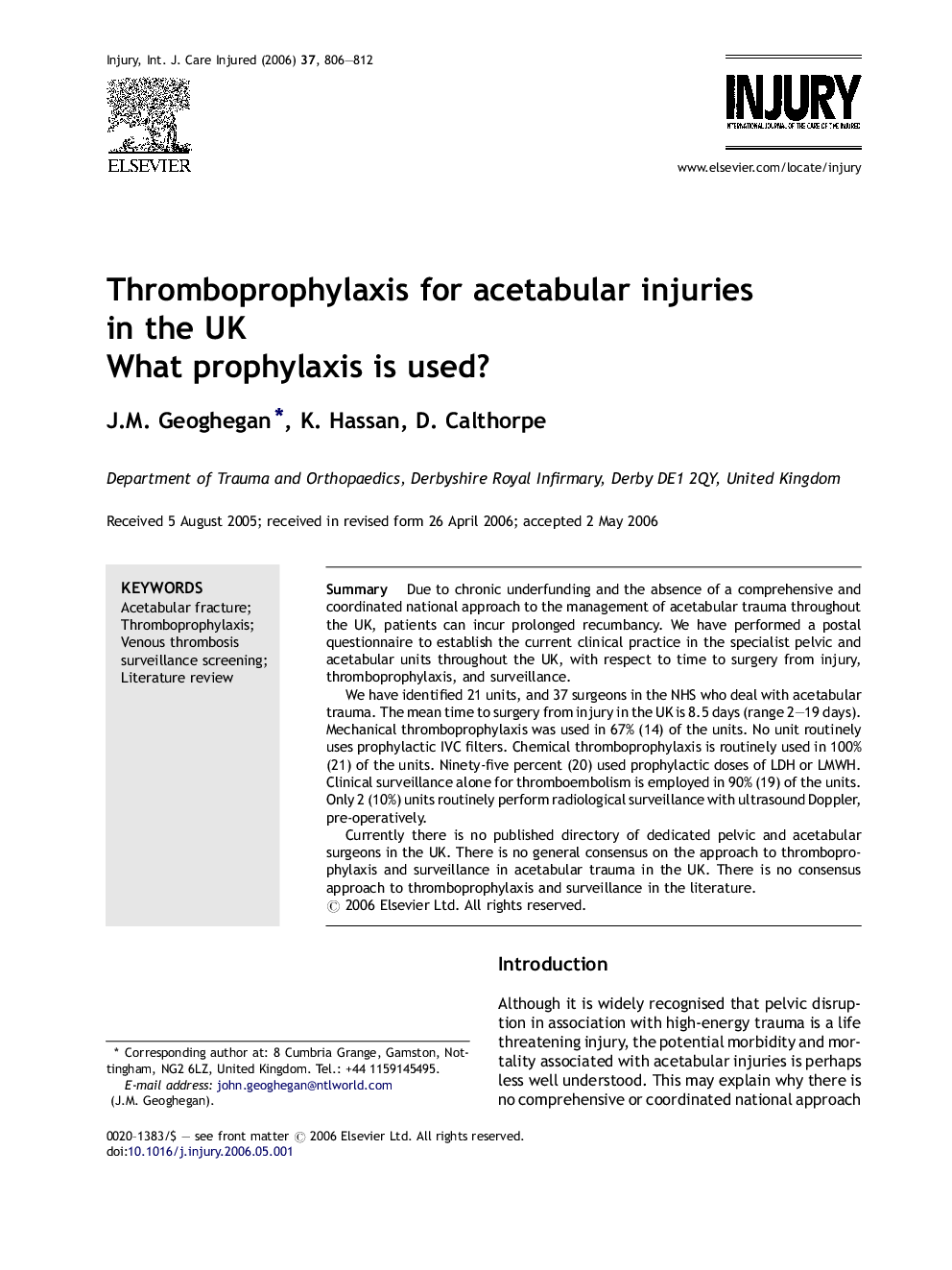| Article ID | Journal | Published Year | Pages | File Type |
|---|---|---|---|---|
| 3242845 | Injury | 2006 | 7 Pages |
SummaryDue to chronic underfunding and the absence of a comprehensive and coordinated national approach to the management of acetabular trauma throughout the UK, patients can incur prolonged recumbancy. We have performed a postal questionnaire to establish the current clinical practice in the specialist pelvic and acetabular units throughout the UK, with respect to time to surgery from injury, thromboprophylaxis, and surveillance.We have identified 21 units, and 37 surgeons in the NHS who deal with acetabular trauma. The mean time to surgery from injury in the UK is 8.5 days (range 2–19 days). Mechanical thromboprophylaxis was used in 67% (14) of the units. No unit routinely uses prophylactic IVC filters. Chemical thromboprophylaxis is routinely used in 100% (21) of the units. Ninety-five percent (20) used prophylactic doses of LDH or LMWH. Clinical surveillance alone for thromboembolism is employed in 90% (19) of the units. Only 2 (10%) units routinely perform radiological surveillance with ultrasound Doppler, pre-operatively.Currently there is no published directory of dedicated pelvic and acetabular surgeons in the UK. There is no general consensus on the approach to thromboprophylaxis and surveillance in acetabular trauma in the UK. There is no consensus approach to thromboprophylaxis and surveillance in the literature.
